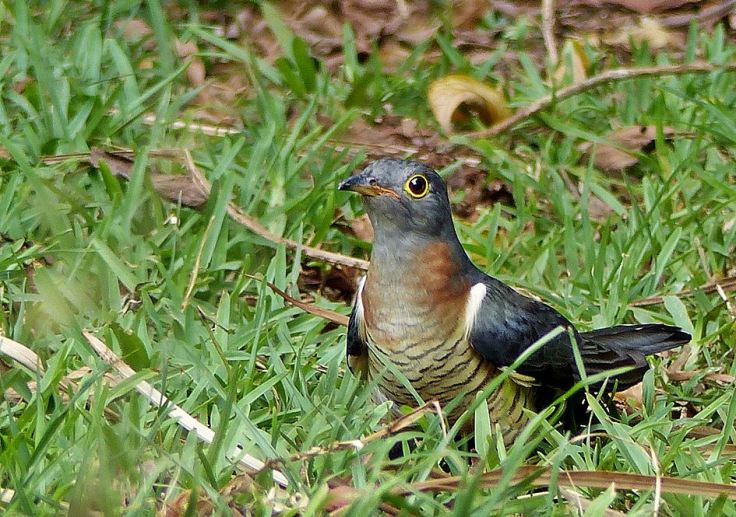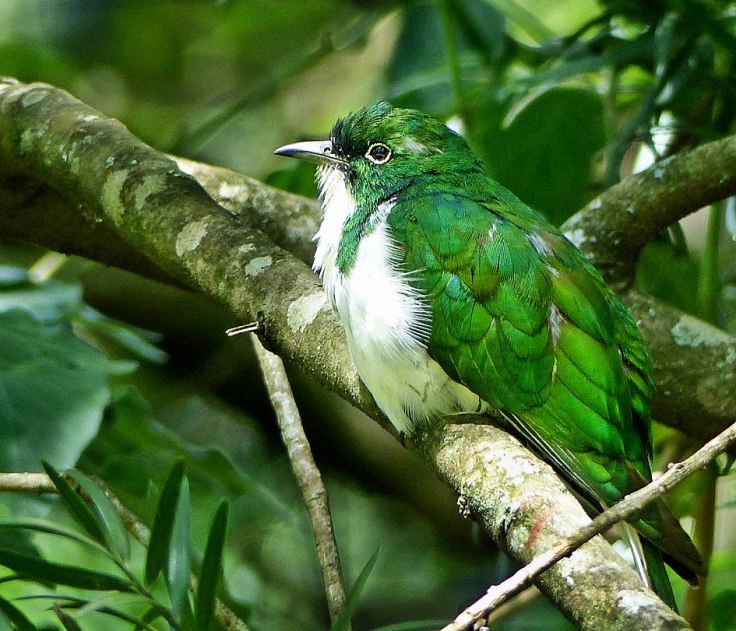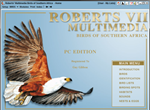Not all cuckoos are brood parasites, but the cuckoos in our area all lay eggs in the nests of other birds and leave the hosts to raise the young. The female cuckoo surreptitiously approaches a host nest and rapidly lays a single egg and also removes another egg from the nest. She will lay 4 to 5 eggs on successive or alternate days in different nests, and most will lay about 20 eggs in total over one breeding season.
Some cuckoo eggs closely resemble the colouration of the eggs of their chosen host. About two days after hatching, the cuckoo nestling evicts all the eggs and/or young of the host. Commonly cuckoo eggs hatch slightly ahead of the host nestlings giving the cuckoo nestling a slight advantage.
All the cuckoos that visit our area are sub-Saharan intra-Africa migrants, although two species remain resident all year round in some areas. They all prefer wooded areas including forest edges and woodland, well treed farmlands and gardens and even exotic plantations. They are generally solitary and as they mostly keep to the tree tops, not easily seen, but all have loud and repetitive calls during the summer months.
The beautifully barred bird in the above picture is the Red-chested Cuckoo, commonly known in South Africa by its Afrikaans name, Piet-my-vrou. This rather nonsensical phrase (literally Pete-my-wife) approximates to the bird’s three-note call, which is repeated endlessly by territorial males during the summer, even at night. Like other cuckoos, it is larger than its common host species. It is strange to see smaller Cape Robin-Chats (a common host) working feverishly to feed the almost grotesquely larger and vocally demanding cuckoo chick that they raise in place of their own brood.
Hairy caterpillars are a favoured food item favoured by most cuckoos, although they eat other insects as well, and the Piet-my-vrou’s diet also includes centipedes, snails, small frogs and lizards, berries and the eggs of hosts.

The Red-chested Cuckoo spends most of its time in the tree canopies, but this one surprised me by foraging on the ground in an open area of lawn.
Most colourful is the African Emerald Cuckoo with its iridescent green offset by a bright yellow lower chest and belly and barring under its tail and wings. Its call is commonly transcribed in English as “Hallo Georgie”. It is also a breeding migrant, but some populations remain resident is some parts of southern Africa where its host is the much smaller Greenbacked Bleating Warbler (now called the Green-backed Camaraoptera!). For me, the warbler’s loud repetitive call (said to sound like two stones knocking together) constitutes the sound of summer.

Also frequently heard in our garden is Klaas’s Cuckoo, with a plaintive cry rendered in Afrikaans as “Meitjie”. The other three cuckoos are said to be polygamous and promiscuous, but the Klaas’s Cuckoo is thought to be monogamous. Like the Emerald Cuckoo, it is resident in some areas, with others being breeding migrants. Its primary hosts (battises, warblers and sunbirds) are all tiny compared to the cuckoo nestlings that some of them raise. The male’s metallic green colouring is offset by bright white.

The similar diderick (formerly diederik) cuckoo seems to occur more commonly in neighbouring suburbs, where their host species are more common. Although the female Klaas’s cuckoo colour is more muted than her partner, I like her delicate barring.

The only other cuckoo that occurs in our area is the Black Cuckoo. When I was a child, the old man across the road told me that the male was calling “half-past five”, but the bird books describe it as “hoop-hoo whooo”. In contrast to this rather mournful call, the female lets rip an hysterical series of rolling notes, that the bird books represent as “whirly-whirly-whirly-whirly….”. Whatever, it is always entertaining to hear.
Although the black cuckoo does sometimes sit unconcealed it does not like being approached and so I have not been able to get close enough for a decent picture, but here is my best effort.

In addition to the usual caterpillars and other insects, the Black Cuckoo also eats birds’ eggs and even small birds or nestlings.
In the face of brood parasites, there are some defensive measures that host birds can take. Defences against parasitism include policing nesting sites and chasing off birds such as cuckoos, the positioning and size of nests, timing of nesting, egg inspection and rejection of suspect eggs (more difficult when the parasitising bird’s eggs mimic the appearance of the host’s eggs) or even abandoning an entire nest and brood that has been parasitized. Despite these possibilities, it seems that in certain contexts hosts have no defences against these cuckoos that eject all the eggs and young of their hosts.★
Posted by Carol at letting nature back in
Sources: Roberts Birds of Southern Africa (by Gordon Lindsay MacLean, 5th edition, 1985. Published by the Trustees of the John Voelcker Bird Book Fund, Cape Town). This is the edition with the maroon cover; Roberts VII Multimedia PC Edition. 1997-2016 Southern African Birding. For details go to http://www.sabirding.co.za/roberts7/portal.html










May 31, 2018 at 9:38 pm
The iridescent greens of the African Emerald Cuckoo and the Klaas’s Cuckoo are stunning! So many fabulous captures. 🙂
-Emma
LikeLiked by 1 person
June 1, 2018 at 12:07 pm
Thanks for checking out the cuckoo post. We are fortunate to have so many beautiful cuckoos visiting. I often hear them calling, but they can be difficult to see but some of these birds decided to break with their usual behaviour and stick around despite me and the camera.
LikeLiked by 1 person